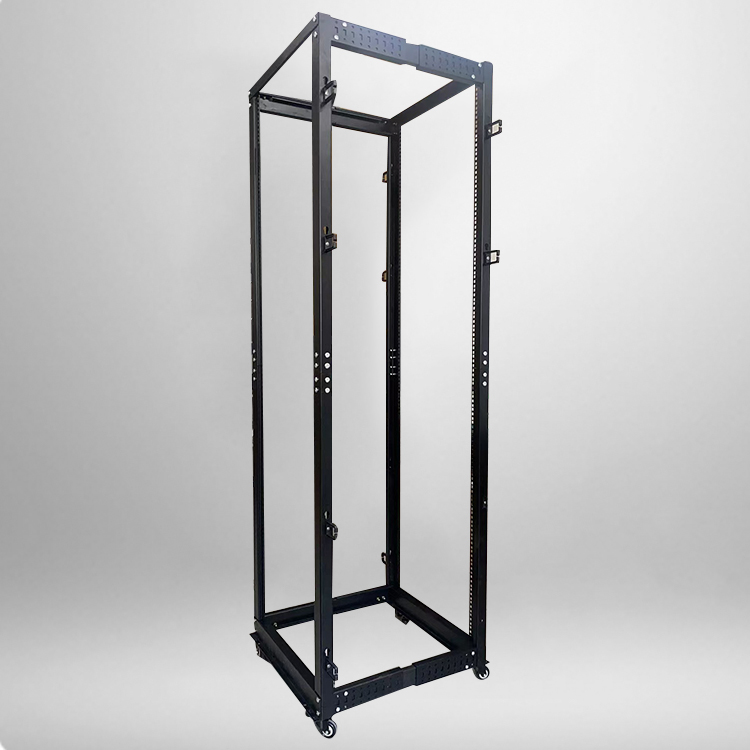
Server cabinets are the unsung heroes of modern technology, serving as organized, secure enclosures that keep IT infrastructure running seamlessly. More than just metal boxes, they are dynamic hubs that balance protection, accessibility, and performance—supporting everything from small office networks to large-scale data centers. Their “dynamic” nature lies in their adaptability to evolving tech needs, ensuring equipment stays safe, cool, and connected in fast-paced digital environments.
At their core, server cabinets are designed to address key challenges of IT infrastructure management. They provide physical protection for servers, switches, routers, and other hardware, shielding sensitive components from dust, debris, unauthorized access, and physical damage. Most cabinets feature lockable doors and side panels, adding a layer of security that safeguards valuable data and equipment. Additionally, their structured design simplifies cable management, reducing clutter and making it easier to troubleshoot, upgrade, or reconfigure systems—saving time and minimizing downtime.
Server cabinets come in a range of types and configurations to suit diverse needs. Rack-mount cabinets, the most common variant, follow standard rack units (U) to accommodate 19-inch equipment, with heights ranging from 6U (compact for small offices) to 42U (full-size for data centers). Wall-mounted cabinets are ideal for space-constrained environments like retail stores or branch offices, as they free up floor space while keeping equipment secure. Open-frame racks, lacking enclosed panels, offer maximum airflow and accessibility, making them suitable for test labs or environments where frequent hardware adjustments are needed. Specialized cabinets, such as climate-controlled or sound-dampened models, cater to extreme conditions—protecting equipment in high-temperature areas or reducing noise in office settings.

Cooling and airflow management are critical features of effective server cabinets. IT equipment generates significant heat, and overheating can lead to performance issues or hardware failure. Most cabinets are engineered with ventilation slots, perforated doors, or built-in fans to promote air circulation, drawing cool air in and expelling hot air out. For high-density data centers, advanced cabinets may integrate liquid cooling systems or hot-aisle/cold-aisle configurations to maintain optimal temperatures. Cable management features—such as cable trays, Velcro straps, and built-in routing channels—also play a role in airflow, preventing cables from blocking vents and disrupting heat dissipation.
Durability and scalability are other key advantages of server cabinets. Constructed from heavy-gauge steel or aluminum, they offer robust structural support, capable of bearing the weight of multiple servers and equipment. Many models feature adjustable mounting rails, allowing users to customize the internal layout as their IT needs grow. This scalability is essential for businesses expanding their operations, as it eliminates the need to replace entire cabinets when adding new hardware. Additionally, cabinet dimensions often comply with industry standards (such as EIA-310), ensuring compatibility with a wide range of IT equipment from different manufacturers.
The applications of server cabinets span across sectors. In enterprise data centers, they form the backbone of cloud computing, storing and processing vast amounts of data for businesses and consumers. Small and medium-sized businesses (SMBs) rely on compact cabinets to manage their local networks, POS systems, and security cameras. Educational institutions use them to support campus Wi-Fi, student data systems, and classroom technology. Government facilities and healthcare providers depend on secure, climate-controlled cabinets to protect sensitive data and critical medical equipment. Even remote workspaces and home offices benefit from compact server cabinets, organizing routers, modems, and small servers to ensure reliable connectivity.
When selecting a server cabinet, several factors should be considered. The size and weight of existing and future equipment will determine the required cabinet height, depth, and weight capacity. Cooling needs depend on the number of heat-generating devices—high-density setups may require advanced cooling features. Security requirements, such as lock types or access control, should align with the sensitivity of the data stored. Cable management options and compatibility with industry standards are also important to ensure easy installation and future upgrades.


